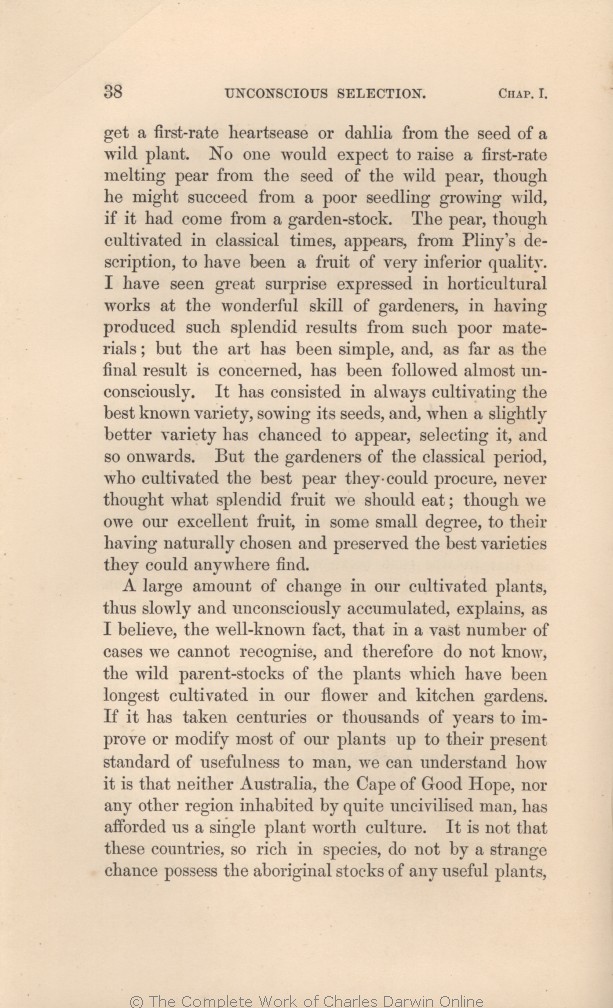get a first-rate heartsease or dahlia from the seed of a wild plant. No one would expect to raise a first-rate melting pear from the seed of the wild pear, though he might succeed from a poor seedling growing wild, if it had come from a garden-stock. The pear, though cultivated in classical times, appears, from
Pliny's | Pliny's 1859 1860 1861 1866 1872 | | Plinys 1869 |
| art 1861 1866 1869 1872 | | art, 1859 1860 |
| OMIT 1861 1866 1869 1872 |
| I cannot doubt, 1859 1860 |
| has 1859 1860 1861 1866 1869 | has 1872 |
| pear 1859 1860 1861 1866 1869 | | pears 1872 |
| they 1859 1860 1861 1866 1869 | | which they 1872 |
|
|
A large amount of
change | change 1859 1860 1861 1866 1869 | | change, 1872 |
| in our cultivated plants, 1859 1860 1861 1866 1869 |
| OMIT 1872 |
| vast 1859 1860 1861 1866 | vast 1869 1872 |
|









